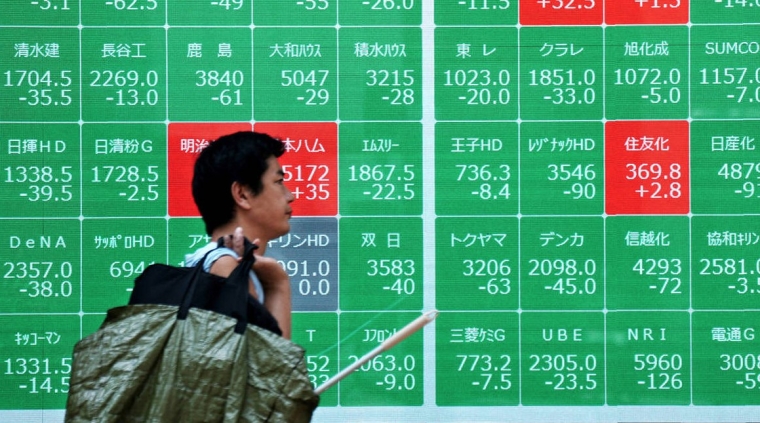
Over a decade ago, Nobel laureates Daron Acemoglu and James A. Robinson, together with their co-author Thierry Verdier, contrasted America’s “cutthroat” brand of capitalism with Western Europe’s “cuddly” version. The qualities that make cutthroat capitalism more conducive to innovation, they argued, also lead to higher levels of inequality, while cuddly reward structures tend to lead to lower growth and higher welfare. Today, inequality is soaring, notably in the United States. Do policies aimed at boosting innovation risk making a bad situation worse?
In the economics literature, one can find plenty of support for the idea that technological innovation is a key driver of inequality. But another important line of thinking attributes rising inequality largely to “financialisation,” a term that encompasses the financial sector’s growing share in the economy, the increasing reliance of non-financial firms on financial activities as a revenue source, and corporate governance focused on maximising dividends for shareholders, rather than investing in future growth.
My co-author Juneyoung Lee and I recently sought to shed light on which factor has a greater role in driving inequality, so we grouped countries according to their levels of innovation and financialisation. We found the highest levels of inequality in the low-innovation, high-financialisation group, which includes a range of developed and emerging economies, such as Brazil, Spain, and Turkey. Inequality was also relatively high in the group where both innovation and financialisation were substantial, including most of the Anglo-American capitalist economies, as well as Japan and South Korea.
By contrast, the high-innovation, low-financialisation group – which includes many of Europe’s advanced economies, such as Austria, Denmark, France, Germany, Italy, and Norway – showed the lowest levels of inequality. The low-innovation, low-financialisation group – which includes most of the emerging economies, such as India, Russia, and some Eastern European countries – have intermediate levels of inequality.
Ultimately, we found no link between innovation and income inequality. This finding challenges those of the French economist Philippe Aghion, who argues that innovation, as measured by the quality-weighted number of patents, tends to exacerbate inequality, because the profits generated by the associated productivity gains become monopoly rents for the innovators. But Aghion’s approach fails to account for other effects of innovation, such as increased investment in physical capital, which can mitigate negative distributional effects by creating job opportunities and increasing the incomes of workers who work with the new systems or equipment.
These benefits are particularly robust when it comes to “product innovation” (the introduction of a new or updated good), because the new product generates a wave of new demand, which spurs increased investment. “Process innovation” (the introduction of a new method of production) is often labor-saving in the short run, but even here, the effect on inequality is typically offset in the longer term by cost savings.
Using the same measure of innovation as Aghion, but accounting for these factors, I have found that innovation does not affect overall inequality or the income share of the top 1-5%. Moreover, the monopoly rents associated with innovations tend to be short-lived, as other firms eventually adopt the new technology.
This brings us back to financialisation, which is directly correlated with inequality – specifically, the gutting of the middle class. As the ratio of stock-market capitalisation, or of stocks traded, to GDP rises, income is redistributed from the middle class to top earners. (The incomes of the bottom 50% are not necessarily affected.)
This effect could be seen in the US after the 2008 global financial crisis, when unprecedented monetary easing caused stock prices to rise, giving the illusion of a robust recovery, even as employment lagged and the real economy struggled. Similarly, in the third quarter of 2023, Japanese stock prices surged to record highs, owing to monetary easing and share buybacks, even though growth had been negative for the previous two quarters.
It is worth noting that financialisation (the influence of financial activities on non-financial firms) is not the same as financial development (the depth, accessibility, and capabilities of financial institutions). Financial development – measured as the ratio of private credit, or of liquid liabilities, to GDP – does not appear to have a significant effect on the income share held by the highest earners.
The message is clear. Policymakers concerned about inequality should not fear technological innovation or financial development, which will lead to growth and jobs in the long run. But they should consider steps to mitigate the distributional consequences of financialisation, such as raising taxes on the financial incomes of the wealthiest households. If they do nothing, the decline of the middle class will continue.
Keun Lee, a former vice chair of the National Economic Advisory Council for the President of South Korea, is Professor of Economics at Seoul National University and the author, most recently, of Innovation-Development Detours for Latecomers: Managing Global-Local Interfaces in the De-Globalisation Era (Cambridge University Press, 2024). Copyright: Project Syndicate, 2025, and published here with permission.
2 Comments
NZ must be an outlier then?
Low innovation, high financialisation, but relatively low inequality (high equality) ?
This is an old (2013) but readable disscussion on what inequality looks like in NZ and various ways of accessing it, its long but if you are interested worth reading.
https://businessnz.org.nz/wp-content/uploads/2022/07/NZIER-Understandin…

We welcome your comments below. If you are not already registered, please register to comment.
Remember we welcome robust, respectful and insightful debate. We don't welcome abusive or defamatory comments and will de-register those repeatedly making such comments. Our current comment policy is here.